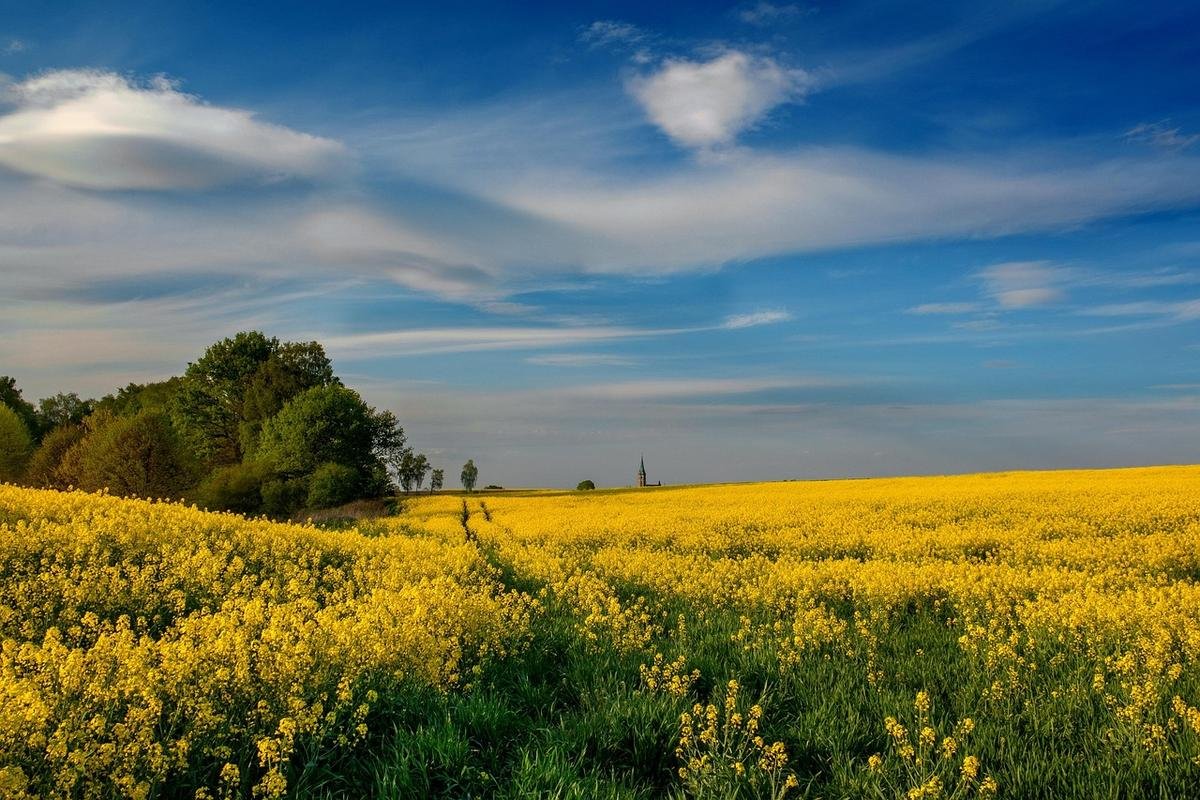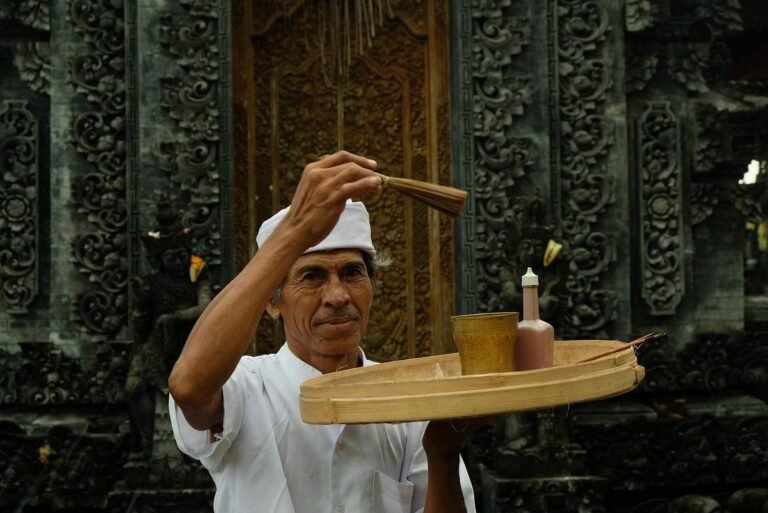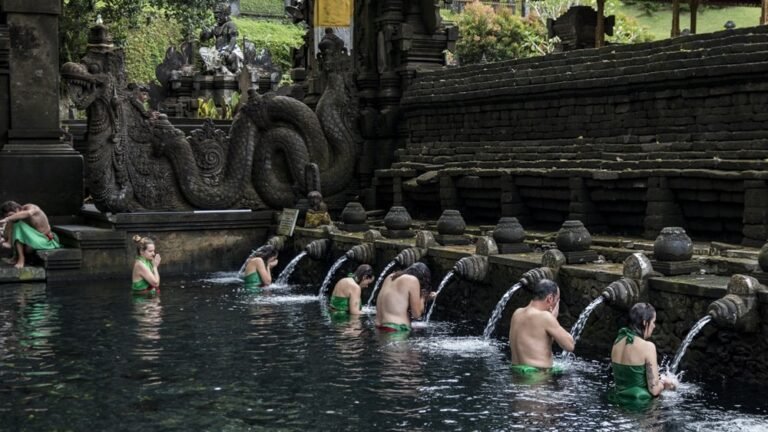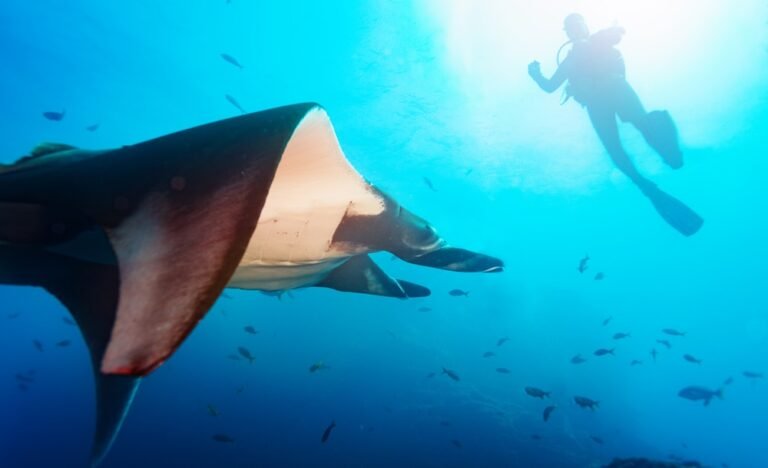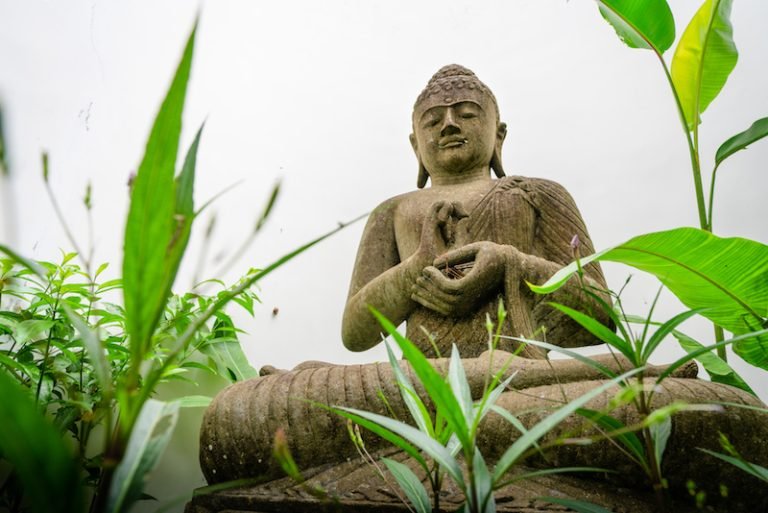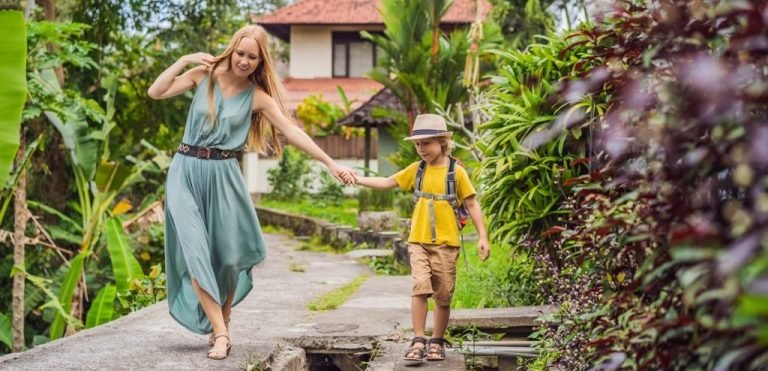Perancak Village Brings Majapahit-Era Stories to Life Just 98 Kilometers from Denpasar
Perancak Village lies in southern Jembrana, about 98 km from Denpasar via the Denpasar–Gilimanuk highway. From Negara, a 19 km drive south along the Tegal Cangkring–Perancak road leads to the coast. The paved route winds through teak groves and village hamlets, with clear signs guiding drivers from Bali’s capital to this coastal settlement. The drive typically takes around two hours by car.
Founded in the late 16th century as Tanjung Ketapang, the settlement sat under I Gusti Ngurah, a ruler known for his pride amid the decline of the Majapahit Kingdom. Early records call it Tanjung Ketapang. A shift came when Danghyang Dwijendra—known locally as Danghyang Nirartha—arrived to teach Hindu scriptures. Villagers admired the scholar, prompting I Gusti Ngurah to worry about the priest’s expanding sway.
During a morning prayer at the ruler’s temple, I Gusti Ngurah refused to respect Danghyang Nirartha. The stone seat beneath the ruler then cracked and collapsed, knocking him down. Witnesses saw this as evidence of the priest’s power and began calling him “Pedanda Sakti Wau Rauh,” or the Priest with the Power to Break Stone. Villagers honored him by building Pura Encak near the shore. Local accounts date the incident to about 1570.
Perancak Beach opens onto the Indian Ocean, its soft white sand bordered by gentle waves in shades from turquoise to deep blue. Sunsets streak the sky with reds and oranges. Visitors stand barefoot on the warm sand, listening to surf lapping against driftwood and shells. Some lounge under the sun or play beach volleyball; others rest on logs, taking in the sea breeze and vast water views. Simple beach warungs sell grilled seafood and cold drinks.
Around midnight, fishermen launch their jukung boats outfitted with bamboo outriggers and nets, heading for offshore waters under a blanket of stars. They fish until dawn before returning with their catch. At the early-morning fish market, rows of wooden stalls feature tuna, mackerel and snapper. The salt air mingles with the briny scent of fresh fish. Hagglers bargain over prices as vendors call out offers. Boats often return with 20 to 50 kg of fish.
On festival occasions, Pura Encak fills with worshippers bearing flowers, rice cakes and incense. The temple stands on a raised terrace shaded by coconut palms, its gateways crowned with stone carvings. Priests in white robes lead chants that echo across the courtyard. Barong figures and gamelan ensembles accompany each ceremony. Families present woven basket offerings before joining rhythmic drumming that has played here for generations. Officiants carry woven palm fronds and wear flower headdresses.
Local artisans carve teak wood into panels decorated with intricate motifs. Nearby, bamboo weavers craft mats, baskets and traditional fishing traps. Women at looms produce cloth in striped and checkered patterns, often featuring sea symbols. Some weavers use natural plant dyes and marine-inspired motifs. A small gallery displays these carvings alongside marine-themed paintings, offering affordable keepsakes from Perancak.
A mangrove forest stretches along the village’s western shore, its tangle of aerial roots stabilizing soil and filtering runoff. A raised boardwalk of 165.45 meters threads through dense stands, with a small entrance fee funding upkeep. Walkers can pause under the green canopy for quiet observation. Herons and crabs populate the forest floor, visible from the walkway’s viewing platforms. It nurtures young fish that move later to coral reefs.
Boat operators offer 1.5-km excursions through the mangroves, taking about 15 minutes per trip. Rowers guide slim wooden craft along the inlet, which forms a green tunnel of overhanging branches. Passengers glimpse crabs clinging to roots and watch herons, egrets or kingfishers perched on limbs. The still water reflects rustling leaves and bird calls. Trips run on demand and connect with boardwalk hikes.
Birdwatchers arrive with binoculars in search of species like the mangrove whistler or the Javan kingfisher. Informational panels along the boardwalk explain how the mangroves reduce erosion and serve as nurseries for juvenile fish. Museum mentors answer questions about nesting seasons and wildlife roles in preserving the coastline. Select panels include QR codes for an audio guide.
Perancak Village merges seafaring roots, sacred sites and a protected mangrove stand into a coastal enclave. Its beach offers a calm stretch of sand by the open sea. Pura Encak recalls the post-Majapahit era, and the fish market and mangroves preserve livelihoods tied to fishing. Local craftspeople sustain traditions of carving, weaving and painting that echo ancestral practices. Perancak has featured in research on coastal management and culture.

